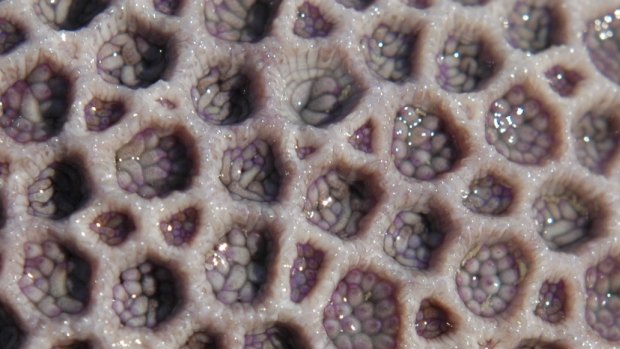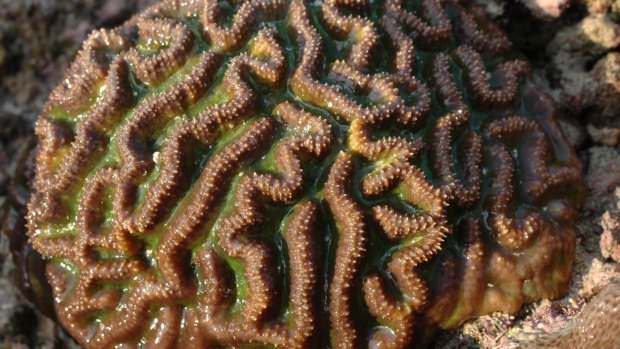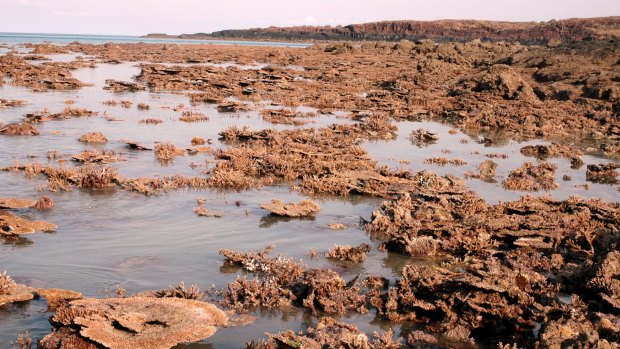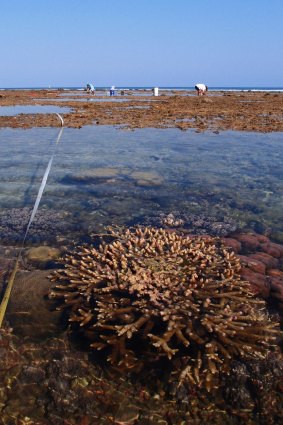This was published 8 years ago
Clues to saving Barrier Reef could come from coral thriving in warming oceans
Unusually hardy coral reefs off the Kimberley coastline are prospering under the ravages of global warming.
By Peter Spinks
While warming oceans are putting much of the Great Barrier Reef under serious threat, some coral is actually flourishing under these tough conditions.
Little-known reefs off the coast of north-western Australia have shown extraordinary resilience and are thriving, scientists have discovered.

Scientists are investigating how corals like this can withstand the ravages of global warming.Credit: Western Australian Museum
The extraordinary resilience of the colourful corals of the Bonaparte Archipelago, a string of several hundred small islands and submerged banks off the Kimberley coast, might offer a solution to struggling reefs elsewhere, said lead researcher Zoe Richards of the Western Australian Museum.
The local reefs and islets, created as a result of rising seas thousands of years ago, are in an intertidal zone with huge tidal movements of up to eight metres that exposes the corals at low spring tide for more than three hours and then entirely submerges them during high tide.

Braving the elements: porites corals like this might save reefs.Credit: Western Australian Museum
"This is part of the reason why the corals are so tolerant to heat stress," Dr Richards explained.
"One minute they are out of the water exposed to the sun then the next they are submerged, surrounded by sediment-laden water which is ripping around really fast in the current. So, corals growing on these reefs have become accustomed to change and have grown to tolerate a wider range of conditions than those in more stable sub-tidal environments."
Being relatively close to the centre of marine biodiversity of Indonesia, this coral community probably gets replenished from there, she added. "In addition, there are no large urban centres or agricultural developments nearby – so the waters are near-pristine with little water pollution," Dr Richards said.
She is investigating other possible reasons for the corals' resilience. These include an abundance of photo-protective pigments that reflect light at low tide, the secretion of mucous that acts as a natural sunscreen and the existence of symbiotic partners, such as the micro-organism cyanobacteria, which can handle the heat.

Bonaparte Archipelago has some of the most heat-tolerant corals in the world.Credit: Western Australian Museum
"It may also be that the Bonaparte corals may feed on small particles in the water at high tide and reduce their metabolic rate during low tide," Dr Richards said.
Finally, she said, high levels of sediment in the water may help offset some of the light stress while the strong currents help the water to mix.

Corals like these might help save other reefs. Credit: Western Australian Museum
"The Kimberley corals provide hope that corals may be able to adapt to warming environments – and the opportunity to further explore what traits enhance stress resistance," Dr Richards said.
"Armed with this knowledge, we can further explore whether stress tolerance can be boosted or bred into corals from other areas, such as the Great Barrier Reef, which is highly susceptible to climate change."
The Kimberley corals provide hope that corals may be able to adapt to warming environments
Dr Zoe Richards, Western Australian Museum
Please send bright ideas to pspinks@fairfaxmedia.com.au